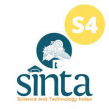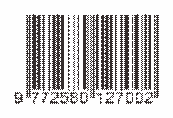DEVELOPMENT OF A VOCATIONAL SKILLS TRAINING MODEL FOR CONSTRUCTION WORKERS
Abstract
Keywords
Full Text:
PDFReferences
Alwi, S. (2004). Training Field Personnel for Small To Medium Construction Companies : an Alternative Tool To Increase. Tarumanagara University, 1–13.
Binakonstruksi.pu.go.id. (2020). Data Tenaga Terampil Konstruksi (TT) dan SKT.
BPS. (2018). Dirjen Bina Konstruksi : Pelaksana Pengadaan harus Pahami Peraturan Pengadaan Barang/Jasa Konstruksi.
Dardiri, A., Sutrisno, Kuncoro, T., Ichwanto, M. A., & Suparji. (2017). Enhancing the competitiveness of skilled construction workers through collaborative education and training. AIP Conference Proceedings, 1887(September). https://doi.org/10.1063/1.5003488
Demirkesen, S., & Arditi, D. (2015). Construction safety personnel's perceptions of safety training practices. International Journal of Project Management, 33, 1160–1169. https://doi.org/10.1016/j.ijproman.2015.01.007
Direktorat Jenderal Bina Konstruksi, K. P. R. (2016). Profil Tenaga Kerja Konstruksi Indonesia Tahun 2016.
Djatnika, S. S., Supandji, B. S., Abidin, I. S., & Trigunarsyah, B. (2005). Peningkatan Kinerja tenaga Kerja Konstruksi Dengan Melakukan Restrukturisasi Kerangka Klasifikasi, Kualifikasi Dan Bakuan Kompetensi Kerja. Jurnal Rekayasa Konstruksi, x(September), 1–8.
Endroyo, B., Yuwono, B. E., Mardapi, D., & Soenarto. (2015). Model of learning/training of Occupational Safety & Health (OSH) based on industry in the construction industry. Procedia Engineering, 125, 83–88. https://doi.org/10.1016/j.proeng.2015.11.013
FENNER, A. E., MORQUE, S., SULLIVAN, J., J., C., & KIBERT. (2018). Emerging workforce training methods for the construction industry. Conference: Construction Research Congress 2018, 7(2), 1–16.
Gann, D., & Senker, P. (1998). Construction skills training for the next millennium. Construction Management and Economics, 16, 569–580. https://doi.org/10.1080/014461998372105
Jide, S., Xincheng, W., & Liangfa, S. (2017). Chinese construction workers' behaviour towards attending vocational skills trainings: Evolutionary game theory with government participation. Journal of Difference Equations and Applications, 23, 468–485. https://doi.org/10.1080/10236198.2016.1258068
Lingard, H. (2002). The effect of first aid training on Australian construction workers' occupational health and safety motivation and risk control behavior. Journal of Safety Research, 33, 209–230. https://doi.org/10.1016/S0022-4375(02)00013-0
LPJK. (2017). Peraturan mengenai Sertifikat Keterampilan (SKT).
Murtinugraha dan Anisah. (2019). Peningkatan Pemahaman K3 Pekerjaan Konstruksi bagi Tukang Bangunan di Kecamatan Muara Gembong, Kabupaten Bekasi. JPkM : Jurnal Pengabdian Kepada Masyarakat Http://Doi.Org/10.21009/JPkM, Vol. 1 No.(Keselamatan dan Kesehatan Kerja (K3)), 11.
Rae, L. (2005). Using Training Aids in Training and Development: A Practical Guide for Trainers and Presenters. PT Bhuana Ilmu Populer.
Riaz, Z. (2005). Training of Construction Workers in Pakistan. 7(1).
Rivelino. (2017). Analisis Faktor-faktor yang mempengaruhi Pelaksanaan Sertifikasi Keterampilan Kerja Tenaga Kerja Terampil Konstruksi. Sekolah Pasca Sarjana Universitas Katolik Parahiyangan Bandung.
Rothenberg, A. D., Gaduh, A., Burger, N. E., Chazali, C., Tjandraningsih, I., Radikun, R., Sutera, C., & Weilant, S. (2016). Rethinking Indonesia's Informal Sector. World Development, 80, 96–113. https://doi.org/10.1016/j.worlddev.2015.11.005
Undang Undang No 2. (2017). Jasa Konstruksi.
W. K. Kellogg Foundation. (1998). Logic Model Development Guide - Using Logic Models to Bring Together Planning, Evaluation, and Action. W. K. Kellogg Foundation.
Widaningsih, L., Hamdani, A., Krisnanto, E., Susanti, I., & Kusuma, Y. (2020). Skilled construction workers in the construction industry: Workers certification dilemma? IOP Conference Series: Materials Science and Engineering, 830(4). https://doi.org/10.1088/1757-899X/830/4/042071
Widaningsih, Lilis, Barliana, M. S., Aryanti, T., & Malihah, E. (2018). Inheritance pattern of vocational skills: An ethnographic study on construction workers in Indonesia. Journal of Technical Education and Training, 10(2), 71–81. https://doi.org/10.30880/jtet.2018.10.02.007
DOI: https://doi.org/10.17509/jare.v5i1.51911
Refbacks
- There are currently no refbacks.
Copyright (c) 2023 Journal of Architectural Research and Education

This work is licensed under a Creative Commons Attribution-NonCommercial-ShareAlike 4.0 International License.

This work is licensed under a Creative Commons Attribution-ShareAlike 4.0 International License.








